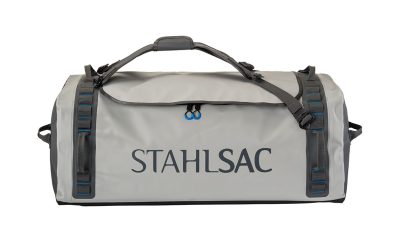News
Dive Buddy Assessment – Increasing Safety with a New Dive Buddy
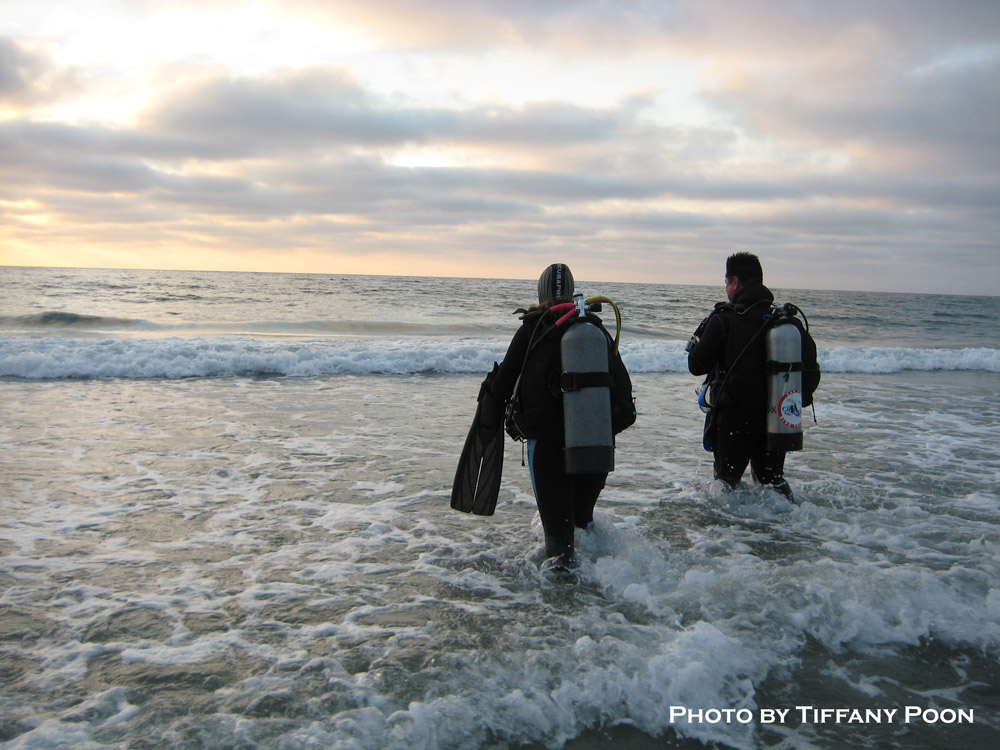
Chris had just over 100 dives under his belt and thought himself to be an experienced diver, though he hadn’t dived in over a year. He recently moved back to the west coast from Oklahoma and joined a local diving group. Eager to dive as soon as possible, Chris buddied up with Nick, a stranger from the dive group. Nick was glad to learn that his new buddy was experienced because he was barely just certified with fewer than 20 dives. Though Nick had dived the local waters, he still wasn’t quite comfortable with his new skills and wanted to make sure that if something went wrong, a more experienced diver would be there to assist. Since Chris hadn’t dived in the area for some time, he was glad to be buddied up with someone who was more recently familiar with the site and he was happy to help out a newly certified diver with adding some dives to their logbook. They reviewed hand signals and did the proper buddy check procedures before entering the water.
Unfortunately, this dive would put one of these divers in the emergency room.
What went wrong? Chris didn’t tell Nick that his gear was in storage for over a year and that he hadn’t dived in as much time. Chris was overconfident in his diving skills and decided not to take a refresher course. As an Open Water diver, Nick was limited to 60 feet (18.3 meters) so the two divers planned to not exceed that depth. However, after 25 minutes at depth, Chris’ inflator valve stuck open and he began a rapid ascent to the surface. Now in a full panic, Chris held his breath the whole way up and was consequentially treated for pulmonary barotrauma at the local hospital. Nick was angry that Chris failed to tell him about his diving history and lack of equipment maintenance (in this case, a rusted inflator mechanism that was easily replaced). Nick felt that if Chris had shared more information, he would have considered finding a different buddy and diving with Chris once he had gone through a refresher course and had his gear inspected.
It is without doubt that there are things that Chris should have done better, but what if Nick was equipped with a way to determine if his new buddy was safe to dive with? In our Open Water class we are taught how to assess the water conditions, plan a dive, conduct a pre-dive buddy check, how to communicate with each other under water and practice out of air situations but we’re never taught how to find a safe buddy. We are encouraged to exchange numbers with people in our class and dive with them, but that’s not always realistic if you have different diving plans than they do (for example, they are vacation divers and you want to dive locally). Sometimes newly certified divers are left looking for buddies to dive with and so join dive groups where those needs are met. Seasoned divers can wind up in a situation where a new diver asks to join them or where, for various reasons, they are buddied up with a stranger on a dive boat. We are not taught how to assess a potential dive buddy and ensure our (and their) safety before jumping into the water with them. What if you instead asked qualifying questions that enabled you to determine if you want to dive with this person or not?
Here are some example questions that you can ask when you are approached by another diver who you are unfamiliar with and who wishes to dive with you:
1. What is your diving experience (number of dives and certification level)?
Determines if this is a newer or infrequent diver who may need some encouragement. Are you comfortable with their certification level and potential depth limits?
2. How many dives do you have in this location and in these conditions?
Our certification qualifies us to dive in conditions similar to what we were trained in. Can this diver handle getting through the surf, maintain composure in low visibility or conduct a night dive in an unfamiliar environment?
3. When was the last time you dived?
Don’t be deceived. Just because someone tells you that they have 400 dives doesn’t mean that they have been in the water recently. Are you comfortable risking safety to dive with someone who may not remember how to assist you if you need help or who may panic when their mask floods?
4. How is your gear working and do you have it serviced regularly?
Determines if they care about their safety in the water and ensures you have a reliable air source in an out of air emergency. How do you know if they have the skills to handle an equipment failure? If they dived recently, did they encounter any gear problems?
5. How long are your dives and what is your average depth?
This is a quick way to help determine who may be the first to run out of air. Are they using steel or aluminum tanks and what is their capacity?
It would be inappropriate to ask people about their medical or physical conditions, but you should use your own best judgment to determine if you want to dive with someone who appears to have obvious signs of impairment that you are uncomfortable with. For example, I’ve heard of people who reeked of alcohol insisting they were fit to dive. That’s definitely not someone anyone should want to dive with!
You can tailor questions to fellow divers to suit your needs. For instance, if you are a wreck diver, your questions would be changed to satisfy the skills needed on a dive to penetrate a ship. The idea is to encourage you to ask questions to benefit the safety of you and your buddy. Keep in mind that if you are asking questions and don’t feel like the other person is being honest with you, follow your gut instinct. If you find out that they weren’t being honest (maybe after something goes wrong) then at least you did your part in attempting to ensure your (and the other diver’s) safety. If you feel uncomfortable asking divers questions about their skills and level of diving consider what the consequences are if you don’t. I’d rather tell a diver, “No, I don’t feel comfortable diving with you until you have your gear serviced or take a refresher course,” than face a family who is mourning the loss of their loved one because of a gear malfunction that contributed to their death.
Also, consider that as you ask another diver questions about their skills and comfort levels, you too may want to volunteer the same information to them. If you are a new diver looking to dive with others, ask questions and reciprocate with honesty about your skill level as well. Know that divers may feel hesitant to dive with you, so be candid about your weaknesses and point out your strengths. This tells them that, in the least, you have an understanding of what you’re doing in and out of the water as a newly certified diver.
Of course, there are some divers that are okay jumping in the water with just anyone and that’s fine if he or she is comfortable with the risks. However, there are plenty of divers out there that have scary buddy stories to tell or who may have had a better experience if they had taken steps to find out a little more about their new dive buddy. Of course, asking questions doesn’t mean that it’s ultimately going to eliminate any dangers. We all know that anyone, no matter his or her skill level, can have a bad day in the water, even leading to loss of life. Unexpected things do happen. However, by putting information out on the table from the start increases your chances of having a great day in the water. It can help determine a safer dive plan, lead to improved buddy alertness, boost skill confidence, enhance safety awareness, and most importantly build a foundation of trust with a potential lifelong diving friend.
The above story is based on true events. Names and details have been changed to protect privacy.
Gear News
Go anywhere with Stahlsac
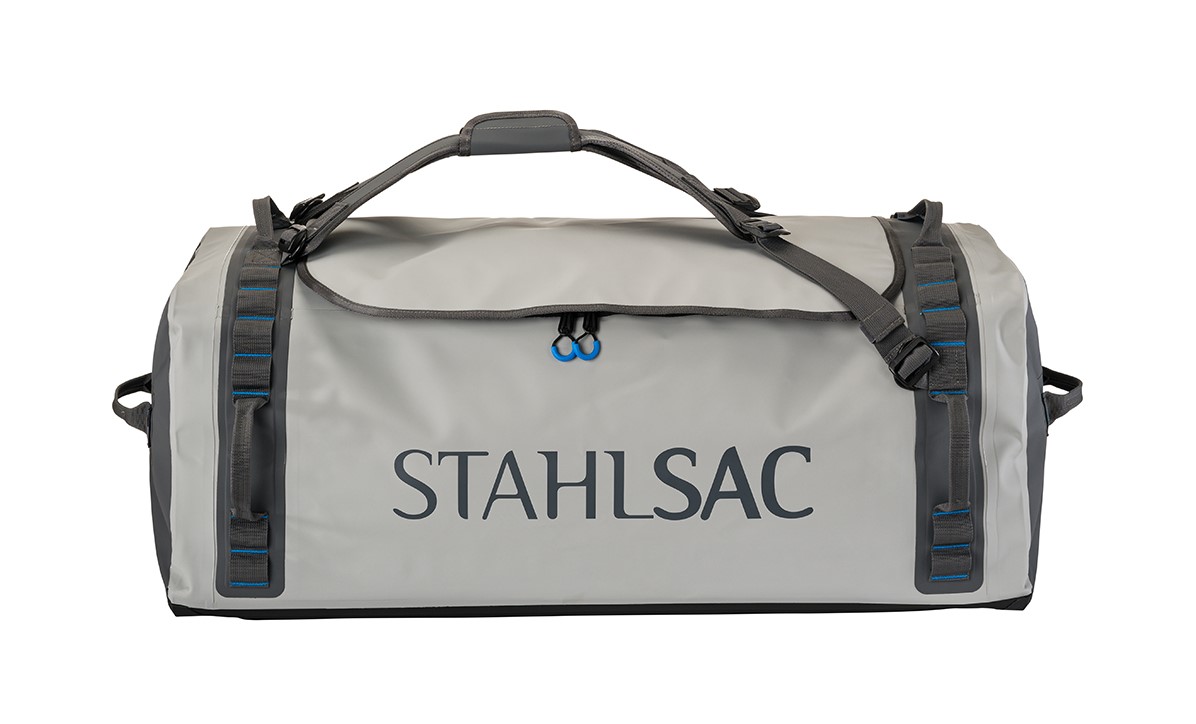
Stahlsac dive bags and travel luggage are built for our community of divers, surfers, kayakers and outdoor explorers who need bags that are constructed with durability, toughness, and 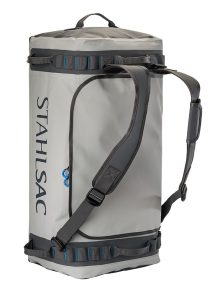 the highest quality the industry has ever seen. We were founded by one man determined to build better watersports and dive bags, and today, that mission is carried on by many. Adventure doesn’t just present itself; it requires discovery. When we design dive bags, we make sure they are tough enough for you to explore in all conditions—warm and cold, wet and dry—to the nearest and farthest reaches of the earth. And for those times you want to push the boundaries of adventure, Stahlsac dive bags make sure you can truly GO ANYWHERE.
the highest quality the industry has ever seen. We were founded by one man determined to build better watersports and dive bags, and today, that mission is carried on by many. Adventure doesn’t just present itself; it requires discovery. When we design dive bags, we make sure they are tough enough for you to explore in all conditions—warm and cold, wet and dry—to the nearest and farthest reaches of the earth. And for those times you want to push the boundaries of adventure, Stahlsac dive bags make sure you can truly GO ANYWHERE.
Abyss Duffels
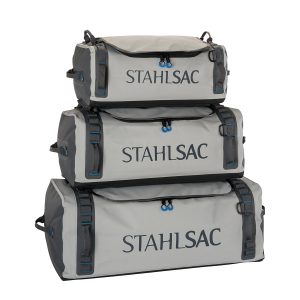 Made to be your partner-in-crime on every adventure, Stahlsac’s Abyss Duffels protects your gear from Mother Nature’s worst. Tough and 100% waterproof with double-TPU nylon material that shrugs off daily wear-and-tear, and RF-welded seams further boost the bag’s potential for lifelong exploring. Get Wet. Get Lost. Go Anywhere with Abyss.
Made to be your partner-in-crime on every adventure, Stahlsac’s Abyss Duffels protects your gear from Mother Nature’s worst. Tough and 100% waterproof with double-TPU nylon material that shrugs off daily wear-and-tear, and RF-welded seams further boost the bag’s potential for lifelong exploring. Get Wet. Get Lost. Go Anywhere with Abyss.
- A weatherproof duffel for trips, travel, and adventure
- Ultra-durable double-TPU nylon protects your gear
- Material repels water and keeps your equipment dry
- RF-welded seams are flush, tough, and waterproof
- Removable straps transform duffel into backpack
- Zippered internal stow compartments carry essentials
- External zippered flap is easy to open and close
- Welded external handles make transporting a breeze
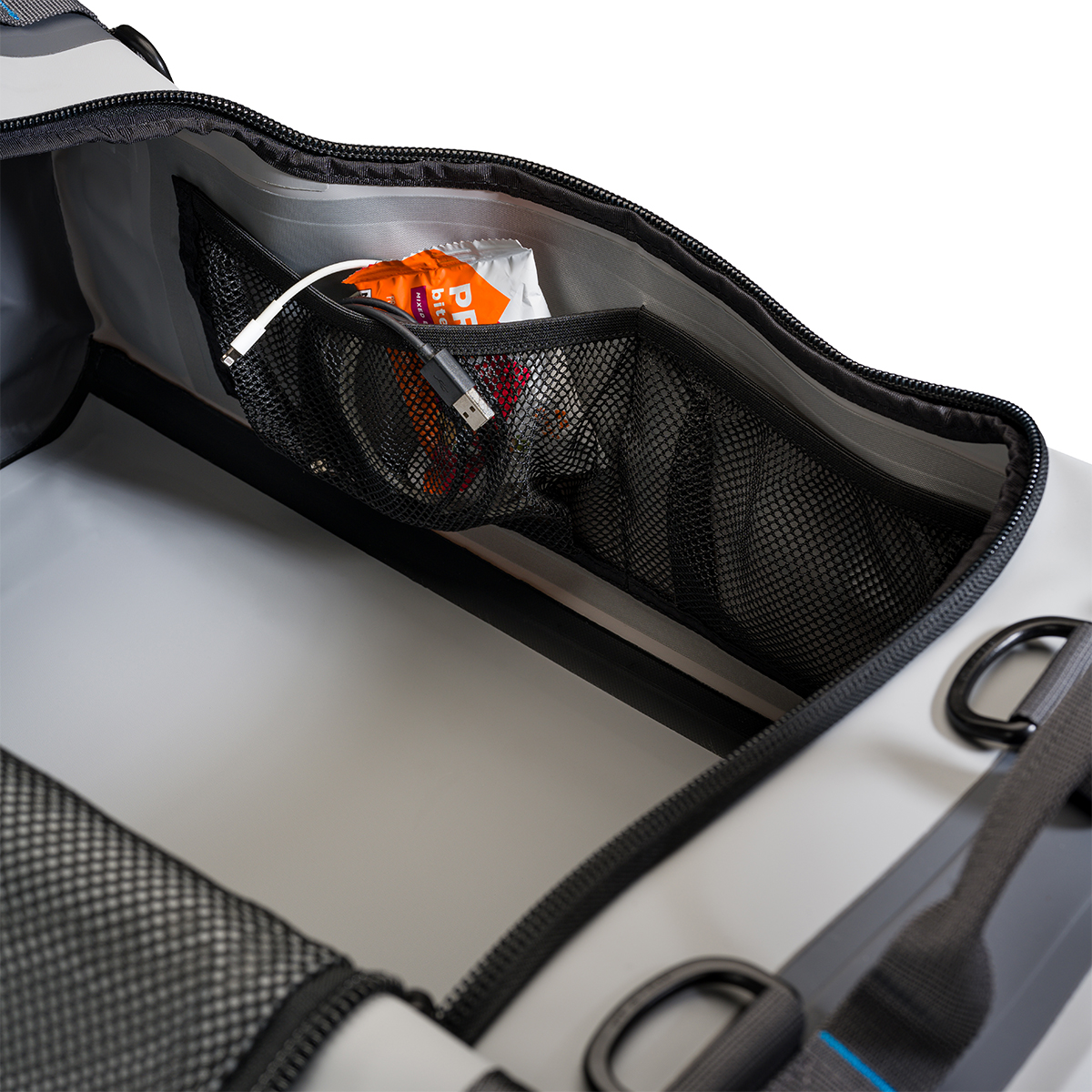
Panama Mesh Backpack
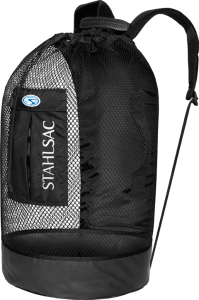 The most copied design in scuba diving, the Stahlsac Panama Mesh Backpack is the “original” design and features two high-density foam padded shoulder straps, extra durable polyester mesh, duffel bag handles and our unique zippered dry pocket inside that combines with a wet pocket outside. The bottom’s built from reinforced 18-gauge PVC nylon to combat the wear and tear of your active coastal lifestyle, and, as a bonus in every bag, we supply a 12″ x 12″ mesh drawstring satchel for extra stowing utility. Pack up your beach kit and go.
The most copied design in scuba diving, the Stahlsac Panama Mesh Backpack is the “original” design and features two high-density foam padded shoulder straps, extra durable polyester mesh, duffel bag handles and our unique zippered dry pocket inside that combines with a wet pocket outside. The bottom’s built from reinforced 18-gauge PVC nylon to combat the wear and tear of your active coastal lifestyle, and, as a bonus in every bag, we supply a 12″ x 12″ mesh drawstring satchel for extra stowing utility. Pack up your beach kit and go.
- Density foam padded shoulder straps
- Outside wet/dry pockets
- 2 Carry handles
- Tough, snag-resistant polyester mesh
- Reinforced PVC bottom
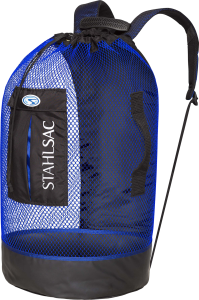
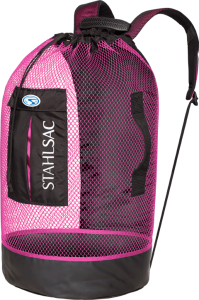
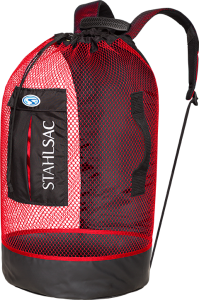
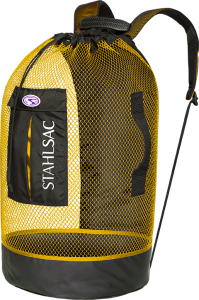
For more information about Stahlsac bags, visit www.stahlsac.com/dive-bags.
Sea & Sea is the home of Stahlsac and other leading diving brands in the UK.
Blogs
EXCLUSIVE: Jeff Goodman interviews Mark Spiers, CEO of New Scuba Diving Training Agency NovoScuba

In a video recorded exclusively for Scubaverse.com, Jeff Goodman interviews Mark Spiers, CEO of new scuba diving training agency NovoScuba.
Find out more about NovoScuba at www.novoscuba.com.
-

 News3 months ago
News3 months agoCapturing Critters in Lembeh Underwater Photography Workshop 2024: Event Roundup
-

 Marine Life & Conservation Blogs3 months ago
Marine Life & Conservation Blogs3 months agoCreature Feature: Swell Sharks
-

 Blogs2 months ago
Blogs2 months agoMurex Resorts: Passport to Paradise!
-

 Gear Reviews3 weeks ago
Gear Reviews3 weeks agoGEAR REVIEW – Revolutionising Diving Comfort: The Sharkskin T2 Chillproof Suit
-

 Blogs2 months ago
Blogs2 months agoDiver Discovering Whale Skeletons Beneath Ice Judged World’s Best Underwater Photograph
-

 Gear Reviews3 months ago
Gear Reviews3 months agoGear Review: Oceanic+ Dive Housing for iPhone
-

 News2 months ago
News2 months agoPADI Teams Up with Wellness Brand Neuro to Drive Ocean Change and Create a Blue State of Mind
-

 Marine Life & Conservation2 months ago
Marine Life & Conservation2 months agoSave the Manatee Club launches brand new webcams at Silver Springs State Park, Florida



